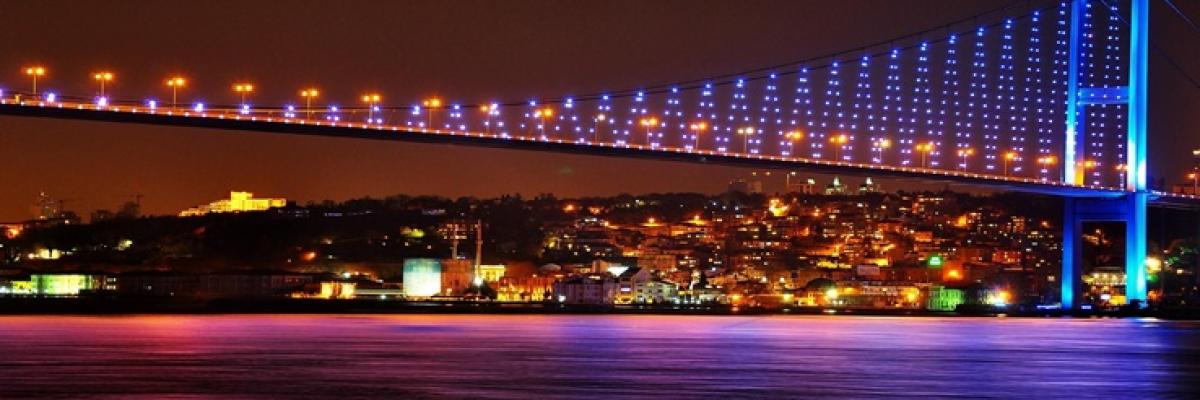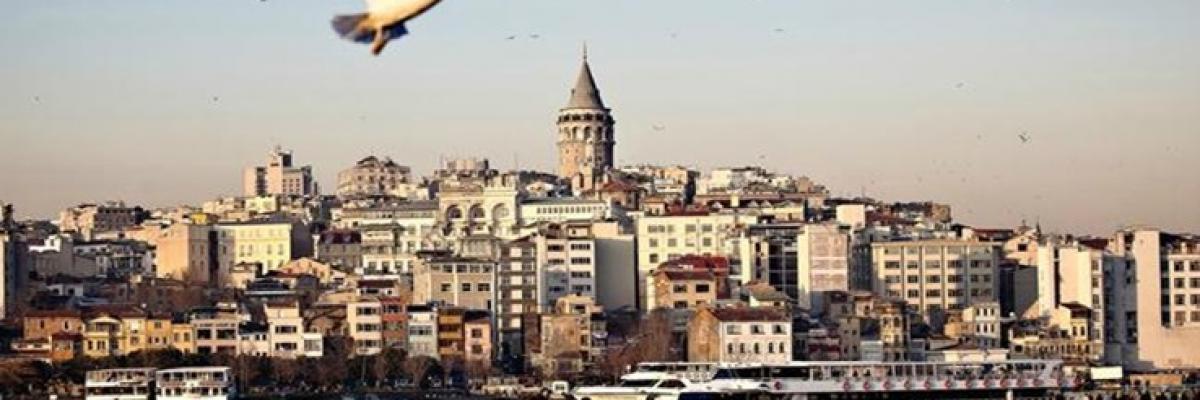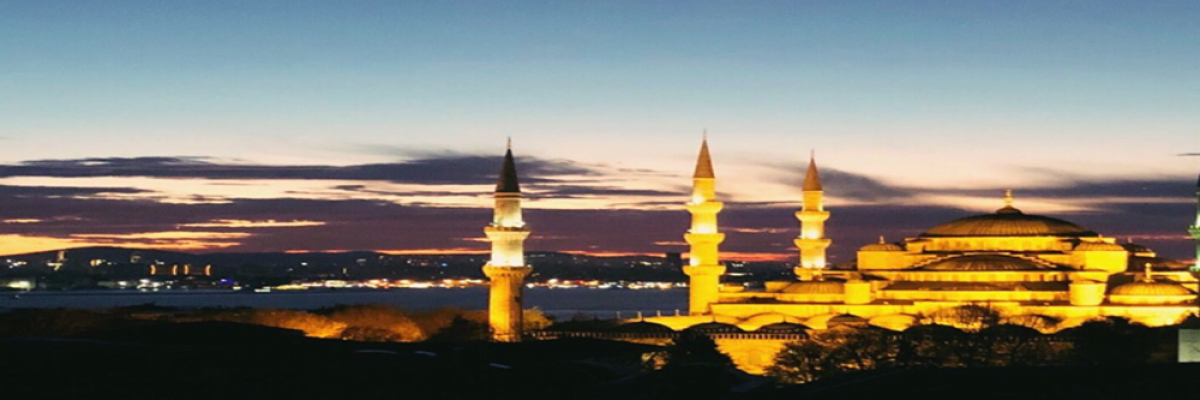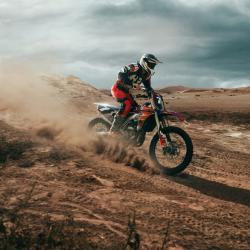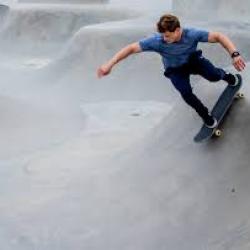Photography
Posted on Sal Eki, 20 by M.İlker AKIN

PHOTOGRAPHY

Photography is the work of creating an image by recording light on a sensitive surface with the camera. It is regarded as an art in terms of aesthetics, as it is a craft due to its functional applications. Technically, lenses are used to focus light reflected or emitted on a light sensitive surface (sensor) in an exposure. In an electronic image sensor, the photograph is formed by charging each pixel with electricity and electronically processing this image.
Etymology as far as we know, on March 14 1839, Sir John Herschel introduced the word photography to the world in a lecture at the Royal Society of London. However, on February 25 of the same year, Johann von Maedler used this word in a newspaper called Vossische Zeitung. The word photography comes from Greek.

History:
Photography is the result of the combination of several technical inventions. Long before the first photographs were made, Chinese philosopher Mo Di and Greek mathematicians Aristotle and Euclid mentioned a pinhole camera in the 5th and 4th centuries BCE. In the 2nd century AD, Byzantine mathematician Anthemius used a kind of dark room in his experiments. Famous optician Ibn-i Heysem (965-1040) has researches on dark rooms and pinhole camera. Albertus Magnus (1193-1280) discovered silver nitrate and Georges Fabricius (1516-1571) discovered silver chloride. Wilhelm Homberg described some chemicals in 1694 how light darken (photochemical effect). In his novel Giphantie published in 1760 by the French writer Tiphaigne de la Roche, he made important comments on what photography means. Photography, which was invented in the first decade of the 19th century, has been found to capture more information and detail (via camera) than traditional arts such as painting and sculpture. The discovery of chemical photography in 1820 was one of the major milestones of modern photography. The first permanent photoetching was produced by French inventor Nicéphore Niépce in 1822. However, Niepce unfortunately destroyed the photograph while trying to reproduce it. Niepce was successful again in 1825.
The first permanent nature photograph (View from the Window at Le Gras) was made in 1826 with the darkroom. However, he worked on new systems, as his photographs could take a very long time (8 hours). Together with Louis Daguerre, they worked with silver compounds as a result of the blackening of silver and lime mixtures when exposed to light, discovered by Johann Heinrich Schultz in 1816. Niépce died in 1833, but Daguerre continued his studies. In 1838, Daguerre painted a pedestrian shoe while shooting a daguerreotype of the streets of Paris (long enough to be seen in the exposure - a few minutes), and this photo is considered the world's first human photograph.
Finally, in 1839, France agreed to pay Daguerre a pension in return for his promise to introduce Daguerre's invention to the whole world as a gift from France (which he did). Meanwhile, Hercules Florence and British inventor William Fox Talbot were already able to correct the silver-worked picture in 1832, in a very similar process that he called the Photographie in Brazil; but they kept it secret. Talbot, after hearing about Daguerre's invention, refined his process so that people could easily take portraits. In 1840, Talbot invented the calotype process that generates negative images.
Talbot's photograph "Oriel window in Lacock Abbey", printed in 1835, is the oldest known negative. John Herschel made important contributions to many new methods. Herschel invented the cyanotype process, today's blueprint (blue print). Herschel was the first to use terms such as photography, positive, negative. During the 19th century, there were many developments in photographic glass plates and printing. In 1884, George Eastman invented the film to replace photographic plates. In 1908, Gabriel Lippmann won the Nobel Laureate in physics for his method of photographic reproduction of light based on the phenomenon of interference, also known as the Lippmann plate.
Types and Operations:
Black and White. All photographs were actually monochrome. Even when color film was made available, black-and-white films preserved their dominance over color films for many years because of their low cost and the "classic" appearance of the photographs. It should be noted that all black and white pictures are not just black and white. Depending on the embroidery, they also come in other colors. Some full color digital photographs can be made black and white by processing using a variety of techniques. Some manufacturers even produced digital machines that can only take monochrome photographs.
Color Color Photography has been invented and developed since the mid 19th century. Initial experiments on color photographs required extremely long exposures (hours or even days), and color photographs exposed to white light quickly faded. The first permanent color photograph was taken in 1861, based on the three-color separation principle of physicist James Clerk Maxwell in 1855.

Digital Photography
Digital photography Full-spectrometer, ultraviolet and infrared Function
Control Settings
Focus (lens) The position of an object being seen or an optical device setting necessary to produce a clearer image
The Adjustment: It is a bit confusing that the term we use as Diaphragm is used in English in two different ways. While it is a leafy mechanism that adjusts the amount of light that passes by "Diaphragm", the diaphragm we use here corresponds to the term "Aperture" and can be expressed with the word "Aperture". It is the motion of these leaves that determines the diameter of the opening and therefore the amount of light passing through.
Light Mechanism used in the Snapshot Camera to determine the exposure time; The time between the opening and closing of the shutter; that is, the amount of time the light-sensitive area receives light
White Balance, When you shine colored light on a white object, the object appears in the shades of that light. Different light sources have different color temperatures, which has a direct effect on the colors of the scene. Sunlight has a different color temperature from shade and shade than lamps in our home. Our brain interprets the color of the light so that we can see normally, as well as using our iris according to the light source in the environment. The white balance feature of the digital camera was also designed to distinguish these differences in light temperature and replaced the films and filters used in the film era.
ISO, What we mean by ISO in photography terms is actually "ISO Speed". Since only ISO is used in general usage, it will only be passed as ISO. ISO refers to the sensitivity of the optical sensor to light, ie the higher the ISO, the more sensitive the optical sensor will be to light.
Golden Ratio: The Golden Ratio is the geometric ratio observed or applied in many branches of science and art, from mathematics to art. It also constitutes an important place for photography. While composing a composition in photography, it allows us to create a balanced frame by simply applying it. To summarize briefly, we divide our frame into 3 equal parts vertically and horizontally. If the point of interest in our frame is in the middle of one of these new sections, we can get an easily understandable aesthetic photo by placing the other important element in the other point. This technique is one of the accepted and generally applied techniques of photography. When viewed through the viewfinder on modern cameras, there are generally golden dots on grids.
Composition (visual arts): Composition is the positioning of objects in the field of vision based on accepted general aesthetic rules. The rectangular frame that determines the boundaries of our photograph is called framing. The point of interest (color difference, light difference, vitality, stasis) in our composition is called the center of interest. The center of interest can be placed according to the generally accepted golden ratio. Although it is not mandatory to apply generally accepted rules in photography, following the rules generally increases the comprehensibility and success of the photograph.
HDR HDR (High Dynamic Range) is a technique applied to photographs taken in the art of photography.
What does it do?
At least three photographs belonging to the same frame taken differently, the software re-evaluates the dark and light areas within a certain logic to create a fourth photograph that appeals to the eye. The places that come out dark at 0 exposure value + the exposed frame, the highlights from the exposed frame - are taken from the exposed frame. Thus, an HDR-applied frame containing all the details is obtained from photographs where there are light imbalances and details are lost.
Application of HDR: If HDR is to be applied from three frames, the photo is taken for example, three frames with exposure values of 0, +2, -2. Shooting at ASA values where the camera creates low noise will affect the quality of the resulting photo. For a good result, this technique should be applied to correctly taken photos. HDR images can be created by transferring the captured photos to the software used to prepare HDR on the computer.
In cases where there are moving areas in the false HDR photo, there is no stabilizer such as a tripod, the composition to be applied HDR can consist of a single photograph. Applying HDR to a single photo is called Pseudo HDR. However, if the photo was taken in RAW format, it is possible to do HDR from a single frame. Blackout problem may occur in this application.
HDR application area: HDR is not applied to all photos. It will give good results, especially in cloudy weather or indoor photos. If working with long exposure for a good HDR, three feet, low primes and three (0, + Pose, -Pose) taken photos and software to create HDR from them are required. Today, HDR can be done with software (Pentax K20D) while taking pictures inside the camera or after shooting in some advanced DSLRs.
Sunny Weather f / 16 Rule (photography): When taking a picture of a subject struck by light on a clear sunny day; Whichever film sensor you're using, the correct exposure values are f / 16 for aperture and 1 / ISO for shutter speed closest to the speed of the film you are using. For example, if the speed of your film (ISO / ASA value) is 100, the shutter value you should use should be 1/125 and if ISO 50 is 1/60. However, if the silhouette is not photographed, the sun should not be in or near the frame and these rules do not apply to silhouette photographs. In addition, if the speed of the film used is measured with DIN or GOST values, it is necessary to convert the film speed to ISO / ASA value before applying these rules.
Panorama: A panorama is any view of a physical space with a wide angle. It can be applied in painting, drawing, photography, film / video, or a three-dimensional model. Also, the term moving picture (pan, pannig, panama; the image obtained by rotating the camera) is derived from the panorama. The word was originally coined by the Irish painter Robert Barker to describe Edinburgh's panoramic paintings. Pictures shown on a cylindrical surface are viewed from inside the cylinder. These works were exhibited in London in 1792 as panorama. The structures built to display large panoramas are called panoramic structures. In these cylindrical structures that take the light from above, the painting would cover all the vertical surfaces without any cut and it was viewed from a raised platform at the base of the cylinder. The first demonstration of this kind was made in Paris in 1799 by R. Fulton. Natural images and war scenes were usually displayed in panoramic structures. In the 19th century, panoramic painting and models were a popular way to represent landscapes and historical events.
Kirlian photography: Kirlian photography is the name given to the electrographic photography technique that aims to detect some radiation emitted from objects with devices based on high voltage, high frequency, low ampere electric field.
Studies in the Soviet Union period After 1939, Kirlian's invention provided the re-recognition of the technique previously known as "electrography", "electrophotography". The basis of the idea (which dry photograph made copying possible) was laid as early as 1777 by George Christoph Lichtenberg. Scientists, including Nikola Tesla, who later worked in this field, studied this effect in more depth in the 19-20th centuries. But Kirlian has taken this research further than his predecessors. Some of the scientists of that period called the power in question in Kirlian photography "Kirlian energy", some Russian and Czechoslovak scientists (Dr. Zdenek Rejdak) called it "bioenergy". However, due to the insufficiency of data on the aura or energy-body in the Soviet Union in the 1940s and 1950s, the Kirlian device gained its reputation only in the 1960s, again with the work of Soviet scientists. The Kirlian photography method was presented to the world of science with the study "Biological Nature of the Kirlian Effect" published by Kazakhstan State University in 1968. The introduction of these studies to the West or the popularization of this issue in the West took place with the book published by research authors Sheila Ostrander and Lynn Schroeder in 1978. Kirlian device, the devices used in Kirlian photography, in its simplest form, consists of a high frequency spark generator in an isolated box, connected with a clamping plate, photo glass or an optical instrument. The device, which does not require a camera, requires generators capable of 75,000-200,000 electrical oscillations per second with electric currents. These generators can also be connected to various optical instruments and microscopes.
Researchers working in the field of Kirlian photography stated that the creature showed changes in color and radiation depending on its excitement and health. Russians have been using the Kirlian photography method in many hospitals to diagnose diseases since the 1970s. Photographs showing effluvi emanating from organs and living things with Kirlian photography and similar techniques are called effluviographie in metapsychic.

Digital photography
Digital photography is a style of photography in which digital technology is used to create images of objects. Until the development of digital technology, photographic film, which requires chemical processes, was used to print images on cards. On the contrary, digital images can be viewed, printed, processed, transported or archived completely using digital technology and computer, without the need for chemical processing.
Digital photography is one of several types of digital imaging. Digital images are also created by using non-photographic equipment such as computed tomography and radiotelescopes or by scanning images printed with traditional methods.
Nature photography
Nature photography is a branch of photography that focuses on nature materials such as landscapes, wildlife, animals, plants. When nature photography is documentary photography and duly recorded, images can be used as documents in flora and fauna detection studies.
Bird photography
Bird photography is a special branch of photography from nature photography that observes birds. Tele-lenses are used in bird photography instead of the standard lenses used in other photography branches. Photography is one of the most difficult branches in terms of technique. It takes time, patience and expensive materials. For a beautiful photo to be taken, it is necessary to make the right settings, focus and clearly create the photo within fractions of a second. Bird photography is evaluated in the "nature photography" category. Bird photography is a branch of photography that requires concentration, patience and attention. A good bird photographer should know his equipment well, know its limits and be able to apply the basic rules of photography. Photographing a bird is an instant thing. Therefore, if the photographer devotes himself to his work in every aspect, beautiful photos will come out.

Equipment Used in Bird Photography:
Below is a list of materials most commonly used by bird photographers:
Camera
There are many types of cameras and the photographer buys the camera according to the photo he wants to take. The machine for a bird photographer should have a high tracking capability. The “continuous focus” method (AI Servo - continuous focus - AF-C etc.) in cameras differs from camera to camera. The hunting moment of a bird is very fast and it is impossible to follow the bird with the human eye and capture that moment. For this, a burst of shooting should be done with a camera, and a camera that takes at least 3-5 frames per second should be shot in order to shoot burst. If the photographer wants to shoot a soaring bird, these features are not so important to him.
Super Tele Lenses
If you want to take a photograph of a bird, you should have a lens with a wide focal range, so it should be a telephoto lens. The use of a tripod is mandatory because such lenses will have a lot of shake.
Flash
Although the use of the flash is not recommended, when used correctly it helps to take beautiful pictures. Some situations become unavoidable when your subject is a bird. Birds often appear in adverse conditions, between branches far from you. Flashes have the side effect of limiting the camera's shutter speed to “flash adaptation speed,” which may be too slow in excess light. Therefore, the use of flash is a situation that requires extreme attention and experience.
Flash Extensions
Most bird photographers use super tele lenses with a focal length of "300mm", but flashes cannot work at such long ranges. For this, in front of the flash, the "fresnel lens" used in lighthouses is used to collect the light and send it powerfully to a point. Thanks to these, the effect of the flash light is not dispersed and it can show the effect of 20m.
Tele converters
Because it is very difficult to approach birds, teleconverters are sometimes used when their lenses are inadequate. Uncertainty is possible when used, but sometimes it can work. These TCs, which can cause loss of detail at very long distances, give very good results at 15-20m distance and TC enables you to get details that you cannot get in the photos you take. The most important of its side effects is the reduction of light entering. This causes slower shutter speed and focus speed. Therefore, the higher the focusing capability of the camera you use, the more successful using TC. Usually using 400 wands or more when using TC will keep the shutter speed at reasonable levels.
Monopod
Monopods come into play when carrying a tripod while off-road is often tiring. Monopods are lighter and more active than tripods, and can avoid blurring. But the biggest reason for its use is its lightness and ease of use.
Camouflage
It is the most common way to approach birds. The photographer waits under a camouflage net that he covers and hopes the birds will approach without him noticing. If it is in the right place, the reward for this waiting may be great. Using this technique, you can get very close to birds and even take pictures of birds with macro lenses.

Photography Lessons
Composition and Effect
Yes, that photo is beautiful but why is it beautiful? After all, there must be a mechanism in our brain that decides this. If we can understand this mechanism a little better, if we place the elements in the photo accordingly, our chances of creating more beautiful photos may increase. In this part of the article, we will give a few examples of what is good for the human eye.
Come as close as you can;
The more you emphasize the subject, the easier you can give the message you want to convey. There may be a million ways to do this, but the easiest is to get as close to the subject as possible and destroy everything in the background. Let's say you want to take a picture of a flower, the chair in the background, or the flower pot or even the green leaves should be in this frame? What message do you want to give the audience? What do you want to draw attention to? Or is it the flower itself? The next time you take a photo of a flower, set up your tripod (or fix the camera on something like a stack of books) and get as close to the flower as you can until the flower fills the whole frame. (this is called filling the frame in photography) When you show this photo, whatever you want to be interesting, have that much in this last frame. What proportion should the flower pot or green leaves be, but in any case the flower itself should be in focus. It should leave chairs and other distractions completely out of the frame in the background.
Composition
There are many ways to place a point in the square. The first thing that comes to mind is placing it in the middle of the square. It works in many situations but is not always the best method. Why not place it up? Why not below? I want it on the right. In fact, it is useful to produce different solutions for different problems. Having the point in the middle gives a static photo. If the point is a car moving to the right and it is placed to the right of the photo, it will give the viewer a feeling of being late while shooting. It is best to place the car on the left with nothing in front of it. Although I call it a square, actually, a photo is a rectangle and some points or lines in that frame are important for a beautiful photo. Let's see some of these now.
Golden Dots and the 1/3 rule
Take the square and divide it by 3 horizontally and vertically. These lines should be a template for your photo, use these lines when placing the subject in your photo, for example, the dividing line of the sky and the land or the trees may be on these lines. The points where these lines intersect are called Golden dots. The subject you place at these points formed due to the intersection is perceived as beautiful by the eye. Those who ask why can find many articles on the internet, including a mathematical explanation, on this topic. In short, we can say that this is the choice of nature. Here are a few examples of how to use these points and lines:

Triangle rule:
It is the placement of the subject in the square using a triangle created inside the square. Example of use
Using framework;
Since it will be easier to frame your photo with other objects in the environment and explain this with an example, you can understand this issue better if you examine the photos below. This photograph was also used as a window frame.
Guiding roads: Paths and trails can be used to increase efficiency inside the square. The path in this photo leads you into the forest, creating a beautiful contrast between green and brown. The road in this photo leads you to the subject, notice that the junction points of the sky and mountains are placed according to the 1/3 rule.
Circle
This technique does not fit the 1/3 technique, which is our basic technique. Therefore, it is a difficult technique to use, but when used correctly, it is possible to obtain beautiful photos. The viewer's eye circles within the square. In this technique, there should not be anything else in the square.
Rhythm
The subject is to create a visual rhythm by repeating the shape.
Negative
The space real object fills a small part of the square. Negative space is often used to make the object look small or feel that the object is in a wide open space.
